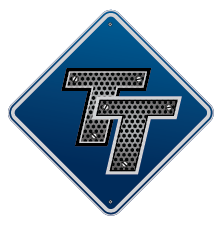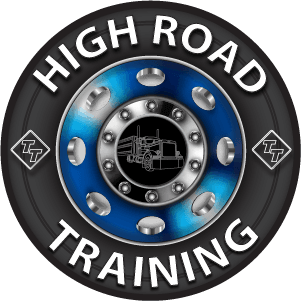1st Time Job Offers Rookie
Topic 25754 | Page 1
Everyone will pretty much tell a rookie to steer clear of dollar tree/dollar general accounts - they are typically a PITA to get to where you unload, most don't have docks, and most a hand unloads.
Much depends on where you are located, what kind of hometime you are looking for. We have a member here (Gary) that's been doing Swift Walmart Dedicated for awhile and loves it.
Rick

Congratulations on getting your CDL.
I agree with Rick, DG is not a good place to start as a rookie. As he stated; I’ve been running WM Dedicated in the North East for 6 years now, started when I had 3 months experience. Although a better choice than DG, it will quickly test your skills and stamina.
Search on my name and Walmart to read all that I’ve written about it. Happy to answer any questions. Good luck.
CDL:
Commercial Driver's License (CDL)
A CDL is required to drive any of the following vehicles:
- Any combination of vehicles with a gross combined weight rating (GCWR) of 26,001 or more pounds, providing the gross vehicle weight rating (GVWR) of the vehicle being towed is in excess of 10,000 pounds.
- Any single vehicle with a GVWR of 26,001 or more pounds, or any such vehicle towing another not in excess of 10,000 pounds.
- Any vehicle, regardless of size, designed to transport 16 or more persons, including the driver.
- Any vehicle required by federal regulations to be placarded while transporting hazardous materials.
I would recommend 6 months OTR before taking on a dedicated account. Lots of close quarters driving on surface streets in congested cities, maneuvering through crowded parking lots to get to some of the docks, and some real tricky backing situations. Many Walmart Neighborhood Markets are in old grocery stores built in the 1970's. Those docks were designed for Day Cabs and 40 foot trailers. It can be very frustrating without good backing/maneuvering skills. Just my $.02

OTR:
Over The Road
OTR driving normally means you'll be hauling freight to various customers throughout your company's hauling region. It often entails being gone from home for two to three weeks at a time.
Day Cab:
A tractor which does not have a sleeper berth attached to it. Normally used for local routes where drivers go home every night.
HOS:
Hours Of Service
HOS refers to the logbook hours of service regulations.Ive driven by dollar general stores and witnessed the 53 foot van driver trying to back into them places. It would be such a nightmare for even the most experienced driver. The last one I seen was hopping 3 curbs at once with the tractor and the trailer.

Tractor wrote:
I would recommend 6 months OTR before taking on a dedicated account. Lots of close quarters driving on surface streets in congested cities, maneuvering through crowded parking lots to get to some of the docks, and some real tricky backing situations. Many Walmart Neighborhood Markets are in old grocery stores built in the 1970's. Those docks were designed for Day Cabs and 40 foot trailers. It can be very frustrating without good backing/maneuvering skills. Just my $.02
Tractor is right...except I’ve seen rookies make the grade on Walmart. I’ve also seen many fail, as well as experienced drivers who failed. It’s a tough Account. But for the right person? You can thrive.
Ask yourself this question; “how good are my backing skills?” You best love it. On average I back 5-6 times per day, and although 2/3rds of the store docks are fairly easy to get into, the other 1/3rd,... are not.
The other question you’ll want to ask yourself; “Am I willing to hustle?” Meaning delivering for Walmart is a constant churn, very few “easy” days, especially in the beginning. 13+ hour days are common; rarely are they less than 12. At times it’s almost as challenging as P&D , but with a longer trailer.
Some keys for success are; NOT rushing, always have a plan, and thoroughly prepping before you get to the store; using Google Maps Satellite view.
I kept a notebook with tabs on each store I delivered to; recording special or difficult circumstances for a specific location. That book now has over 150 pages of information including sketches of entry, the dock setup and egress from the property. I regularly copy or photograph pages of the more difficult stores for newer drivers delivering to a particular location for the first time. It’s all about planning, reducing surprises and preparation so expectations are set before arriving at the circus.
Walmart will improve your close-quarter driving skills far quicker than running conventional OTR. I promise you that.
Click this link; the blog article highlights how I overcame the challenges of running this account as a rookie driver:
Good luck!
OTR:
Over The Road
OTR driving normally means you'll be hauling freight to various customers throughout your company's hauling region. It often entails being gone from home for two to three weeks at a time.
Day Cab:
A tractor which does not have a sleeper berth attached to it. Normally used for local routes where drivers go home every night.
P&D:
Pickup & Delivery
Local drivers that stay around their area, usually within 100 mile radius of a terminal, picking up and delivering loads.
LTL (Less Than Truckload) carriers for instance will have Linehaul drivers and P&D drivers. The P&D drivers will deliver loads locally from the terminal and pick up loads returning to the terminal. Linehaul drivers will then run truckloads from terminal to terminal.
HOS:
Hours Of Service
HOS refers to the logbook hours of service regulations.
Thanks guys... g-town I read your article link, I'm very nervous, have til Mon to decide. I see no one commented on the regional northwest route, is that considered otr , my location is California, each route offer.
Tractor wrote:
I would recommend 6 months OTR before taking on a dedicated account. Lots of close quarters driving on surface streets in congested cities, maneuvering through crowded parking lots to get to some of the docks, and some real tricky backing situations. Many Walmart Neighborhood Markets are in old grocery stores built in the 1970's. Those docks were designed for Day Cabs and 40 foot trailers. It can be very frustrating without good backing/maneuvering skills. Just my $.02
Tractor is right...except I’ve seen rookies make the grade on Walmart. I’ve also seen many fail, as well as experienced drivers who failed. It’s a tough Account. But for the right person? You can thrive.
Ask yourself this question; “how good are my backing skills?” You best love it. On average I back 5-6 times per day, and although 2/3rds of the store docks are fairly easy to get into, the other 1/3rd,... are not.
The other question you’ll want to ask yourself; “Am I willing to hustle?” Meaning delivering for Walmart is a constant churn, very few “easy” days, especially in the beginning. 13+ hour days are common; rarely are they less than 12. At times it’s almost as challenging as P&D , but with a longer trailer.
Some keys for success are; NOT rushing, always have a plan, and thoroughly prepping before you get to the store; using Google Maps Satellite view.
I kept a notebook with tabs on each store I delivered to; recording special or difficult circumstances for a specific location. That book now has over 150 pages of information including sketches of entry, the dock setup and egress from the property. I regularly copy or photograph pages of the more difficult stores for newer drivers delivering to a particular location for the first time. It’s all about planning, reducing surprises and preparation so expectations are set before arriving at the circus.
Walmart will improve your close-quarter driving skills far quicker than running conventional OTR. I promise you that.
Click this link; the blog article highlights how I overcame the challenges of running this account as a rookie driver:
Good luck!
Regional:
Regional Route
Usually refers to a driver hauling freight within one particular region of the country. You might be in the "Southeast Regional Division" or "Midwest Regional". Regional route drivers often get home on the weekends which is one of the main appeals for this type of route.
OTR:
Over The Road
OTR driving normally means you'll be hauling freight to various customers throughout your company's hauling region. It often entails being gone from home for two to three weeks at a time.
Day Cab:
A tractor which does not have a sleeper berth attached to it. Normally used for local routes where drivers go home every night.
P&D:
Pickup & Delivery
Local drivers that stay around their area, usually within 100 mile radius of a terminal, picking up and delivering loads.
LTL (Less Than Truckload) carriers for instance will have Linehaul drivers and P&D drivers. The P&D drivers will deliver loads locally from the terminal and pick up loads returning to the terminal. Linehaul drivers will then run truckloads from terminal to terminal.
HOS:
Hours Of Service
HOS refers to the logbook hours of service regulations.
Hey Tyrone...try to manage the nerves, can distract your focus.
The regional gig sounds good, however try to find out the specifics of that before committing. Many times it’s actually a Dedicated Account or route. Or possibly a paper gig. Try to get more info.
Good luck!
Regional:
Regional Route
Usually refers to a driver hauling freight within one particular region of the country. You might be in the "Southeast Regional Division" or "Midwest Regional". Regional route drivers often get home on the weekends which is one of the main appeals for this type of route.

Not to concerned about home time at this point, no wife, no kid's
Everyone will pretty much tell a rookie to steer clear of dollar tree/dollar general accounts - they are typically a PITA to get to where you unload, most don't have docks, and most a hand unloads.
Much depends on where you are located, what kind of hometime you are looking for. We have a member here (Gary) that's been doing Swift Walmart Dedicated for awhile and loves it.
Rick
Find out as many details as possible about each route, region, and the customers you would be dealing with for each.
New Reply:
New! Check out our help videos for a better understanding of our forum features

















Preview:








 TT On Facebook
TT On Facebook
Anyone ever worked these areas (California)or accounts, my rookie job offers... Werner- Dedicated- Dollar Tree Cali Swift- Dedicated- Walmart- Cali Knight- Regional Northwest- Cali Input on what might be the better offer, remember this would be my first job since obtaining my CDL Thanks
CDL:
Commercial Driver's License (CDL)
A CDL is required to drive any of the following vehicles:
Regional:
Regional Route
Usually refers to a driver hauling freight within one particular region of the country. You might be in the "Southeast Regional Division" or "Midwest Regional". Regional route drivers often get home on the weekends which is one of the main appeals for this type of route.